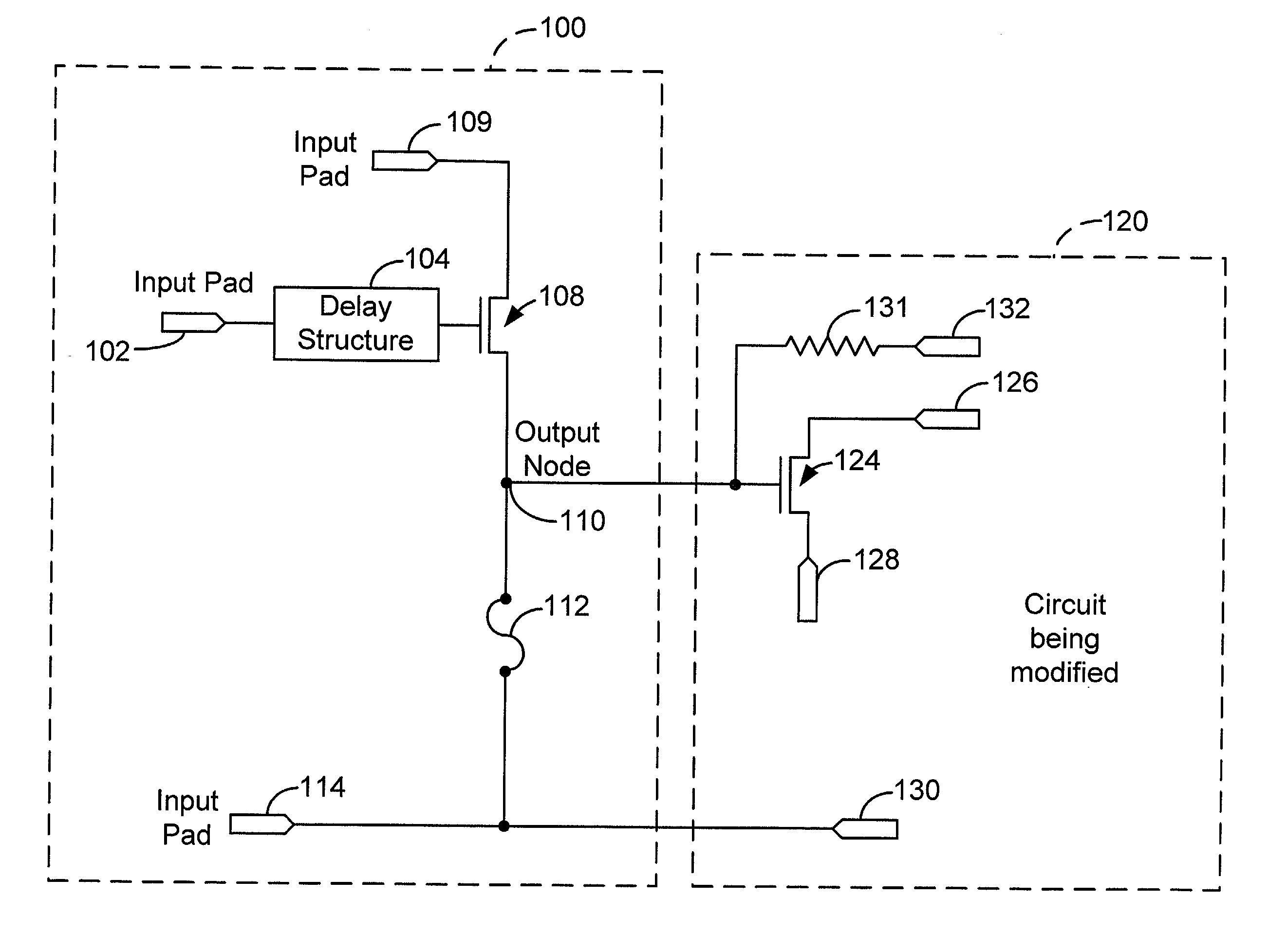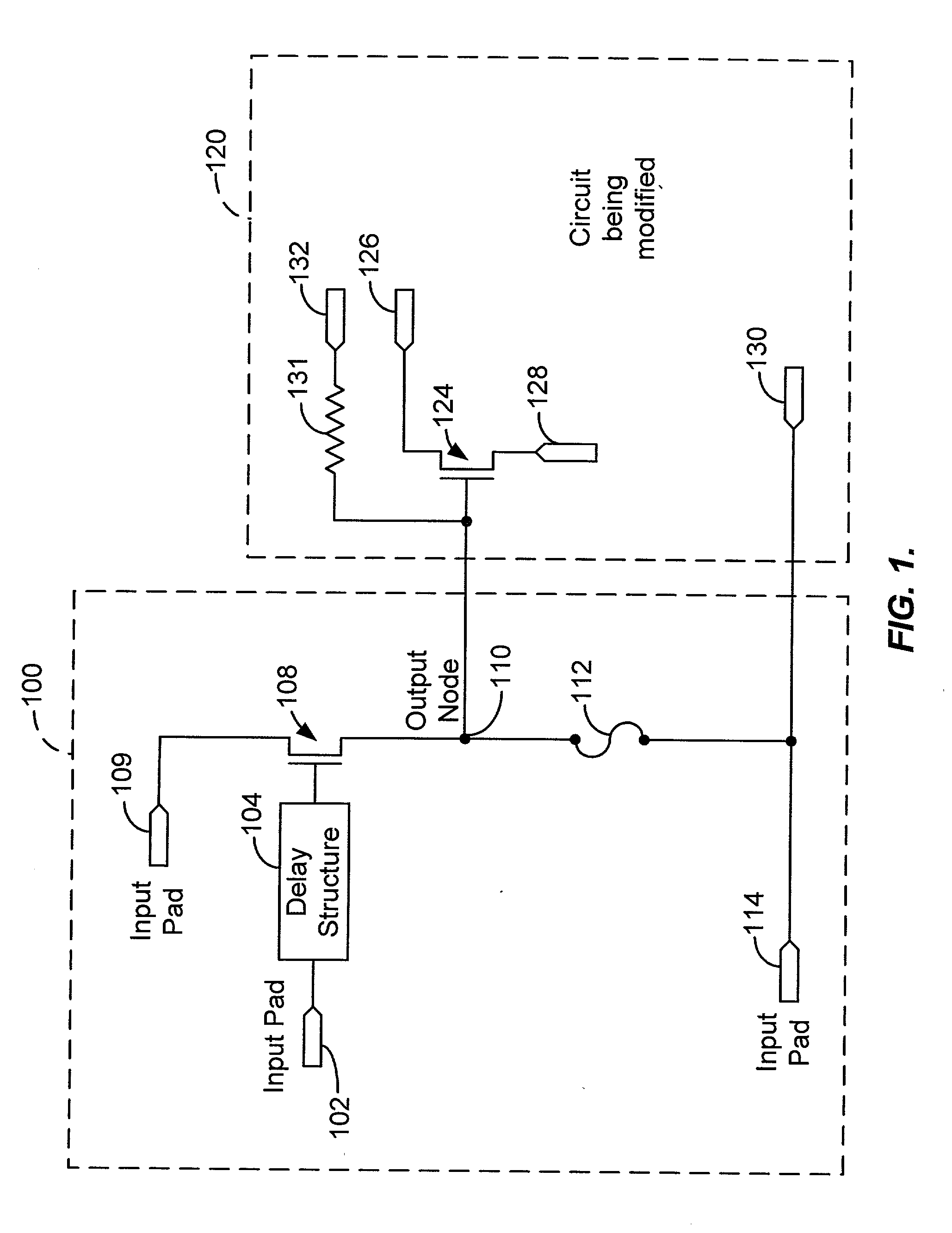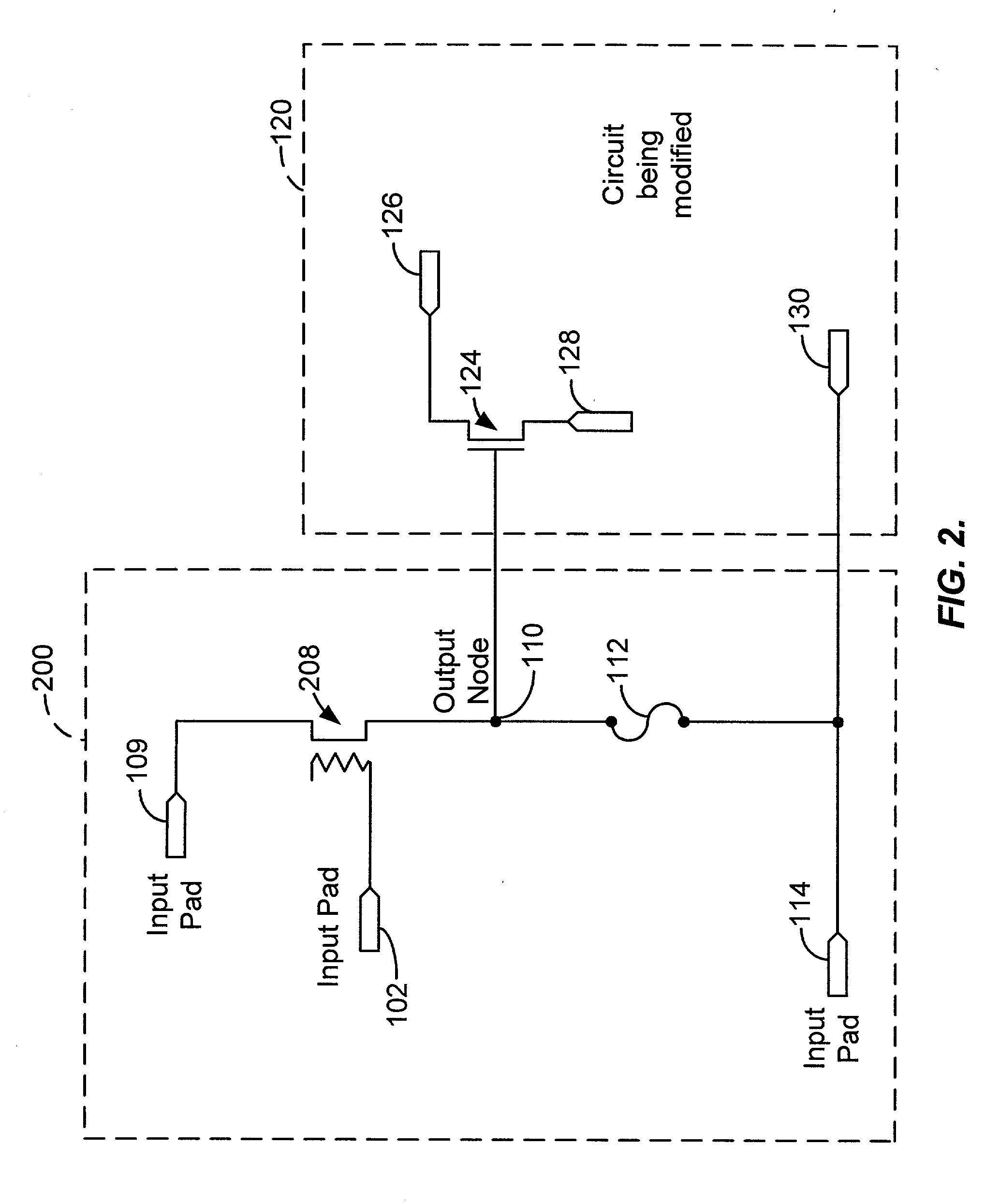Bounce tolerant fuse trimming circuit with controlled timing
- Summary
- Abstract
- Description
- Claims
- Application Information
AI Technical Summary
Benefits of technology
Problems solved by technology
Method used
Image
Examples
Embodiment Construction
[0024] FIG. 1 shows a simplified high-level block diagram of an exemplary trimming circuit 100, according to an embodiment of the present invention. Trimming circuit 100 includes an input pad 102 configured to receive a select signal (also referred to hereinafter as a trigger signal) and includes a delay structure 104 coupled with input pad 102. Delay structure 104 is configured to add a delay to the trigger signal. Trimming circuit 100 also includes a transistor 108 coupled with delay structure 104. The exact dimensions of transistor 108 will depend on the specific application. Transistor 108 is sized to provide sufficient current to trim a metal or polysilicon trimming fuse. Transistor 108 couples between an input pad 109 and an output node 110. Input pad 109 is configured to receive a first voltage potential. In this particular embodiment, the first voltage potential is VDD. VDD can be a variety of voltages, e.g., 3 volts, 5 volts, 12 volts, etc. Typically, VDD is 3.3V. A trimmin...
PUM
 Login to View More
Login to View More Abstract
Description
Claims
Application Information
 Login to View More
Login to View More - R&D
- Intellectual Property
- Life Sciences
- Materials
- Tech Scout
- Unparalleled Data Quality
- Higher Quality Content
- 60% Fewer Hallucinations
Browse by: Latest US Patents, China's latest patents, Technical Efficacy Thesaurus, Application Domain, Technology Topic, Popular Technical Reports.
© 2025 PatSnap. All rights reserved.Legal|Privacy policy|Modern Slavery Act Transparency Statement|Sitemap|About US| Contact US: help@patsnap.com



